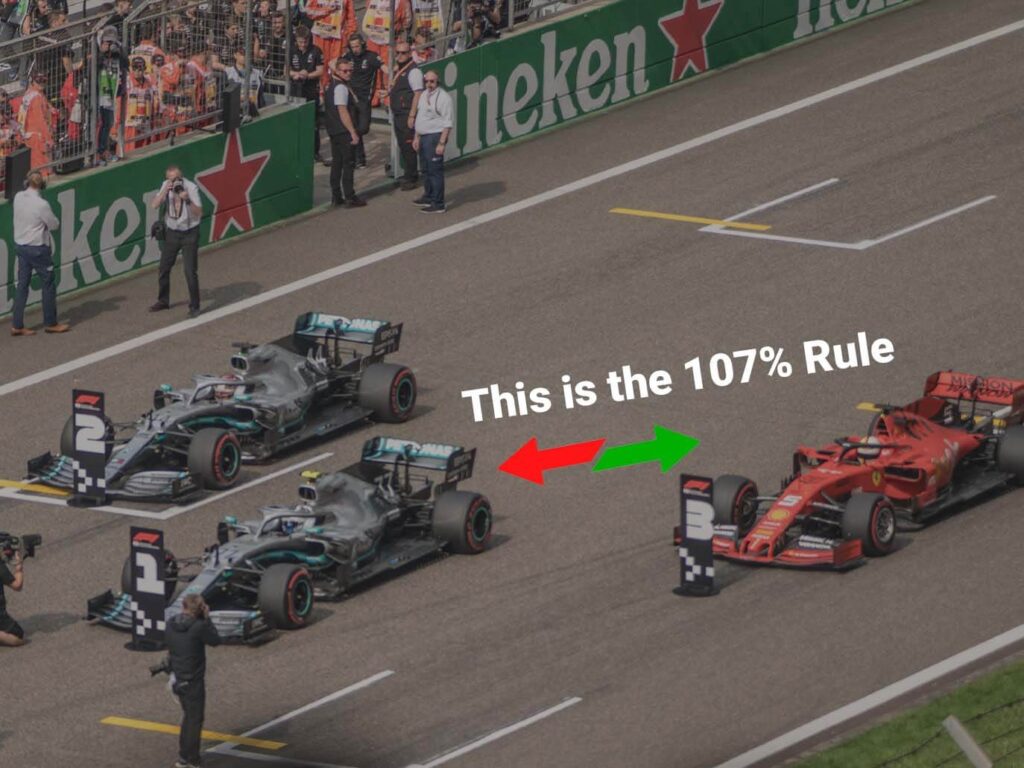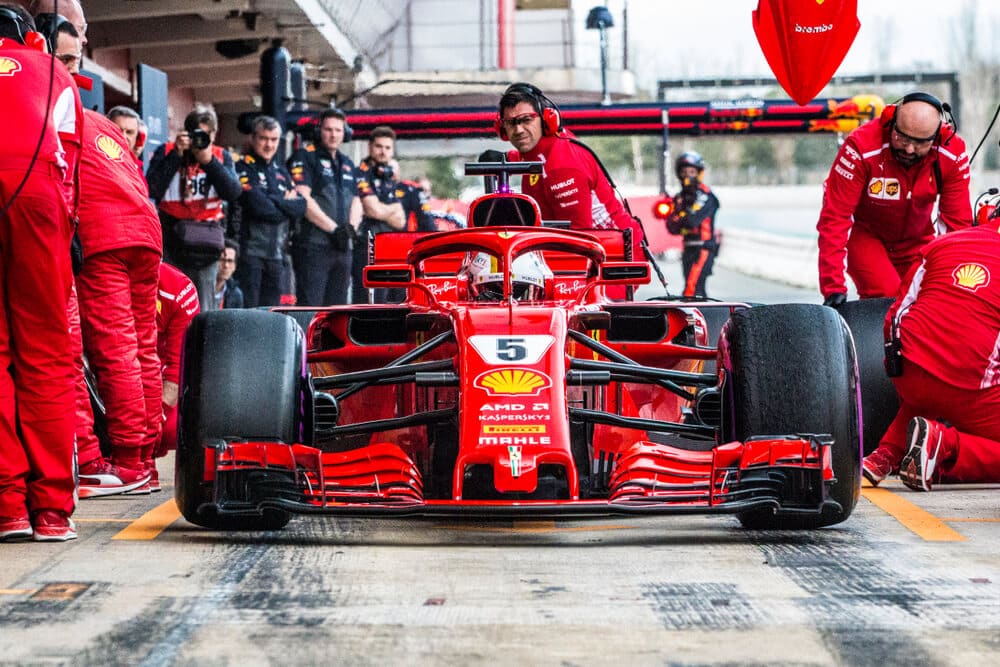Formula 1 is all about fractions of a second. And when it comes to qualifying for a race, there’s one number that really matters: 107%.
The 107% rule in Formula 1 is a controversial rule that was introduced in 1996. This rule was intended to make the sport safer by ensuring that only drivers who were capable of setting competitive lap times would be on the track.
Despite its short lifespan, the 107% rule remains a controversial topic in Formula 1. In this article, we will take a look at the history of the rule and explore why it was ultimately abandoned.
Table of Contents
Watch this video to understand the 107% rule in F1.
What is the 107% rule in F1?
The 107% rule in a Formula 1 is a regulation that requires each driver to set a lap time within 107% of the fastest qualifying time in order to be able to compete in the race. If a driver fails to do so, they will not be allowed to start the race.
Key takeaways
Here are key takeaways from the 107% rule:
- The 107% rule was introduced in 1996 as a safety measure.
- The rule remained in force until 2002.
- It was introduced again in 2011.
- According to this rule, if a driver fails to set a lap time within 107% of the fastest qualifying time, they will not be allowed to start the race.
- The rule is still a controversial topic among Formula 1 fans and experts.

Understanding the 107% rule in Formula One
Now that we know what the 107% rule is, let’s take a deeper look at its history and why it was introduced in the first place.
Introduction
This rule was introduced for the first time in the 1996 season. Back then, there was a big performance gap between the cars, and the front runners usually lapped the rest of the field, causing several cars to drop out. Several smaller F1 teams, like Forti, Simtek, and Pacific, disputed the rule since they were slower than Ferrari and Williams.
The 107% rule was broken in the first race of 1996 when both Forti drivers failed to set a time that was within 107 percent of the leader’s time.
The whole idea behind the introduction of this rule was to keep the slower cars off the track and make Formula 1 a safer sport. However, the rule only lasted a few years before it was scrapped.
Calculation of the 107% rule: how does it work?
The 107% rule is calculated by taking the fastest lap time from qualifying and multiplying it by 1.07. This number is then compared to the driver’s lap time. If the driver’s lap time is slower than 107% of the fastest time, they will not be able to start the race.
To understand how this works, let’s take a look at an example. Let’s say the fastest lap time in qualifying is 1 minute, 30 seconds. This means that the 107% rule would be calculated by taking 1 minute, and 30 seconds and multiplying it by 1.07. This would give us a new time of 1 minute, and 41 seconds.
This means that any driver who fails to set a lap time of 1 minute, 41 seconds, or faster will not be able to start the race.
Why was the 107% rule removed?
A change was made to the qualifying format for the 2003 race season. The drivers would qualify in two separate single-lap shootouts. The shootout order was determined by their position in the championship standings. 107% rule would be impossible to impose with this format and was eventually scrapped.
Reintroduction of the 107% rule
The 107% rule was reintroduced for the 2011 season. It was implemented after the cars in the back of the pack had difficulty keeping pace with the rest of the field.
For instance, the HRT cars could not build a fuel tank that would last until the end of the race, so they had to save fuel, which caused them to be slower.
Is the 107% Rule still being used in F1?
Yes, the 107% rule is still being used in F1.
The 107% rule last came into use in 2021. During the 2021 French Grand Prix, Lance Stroll didn’t complete a full-timed lap due to problems that prevented him from completing 107 percent of the fastest time in Q1. In spite of this, he was allowed to participate in the race because of the times he set during free practices.
Additionally, the 107 percent rule was applied at the Azerbaijan Grand Prix in 2018 when Brendon Hartley’s Toro Rosso failed to set a fast time during Q1. The team, however, claimed he had a puncture on his fastest lap, resulting in sluggish lap times. He was permitted to participate in the race since there was confirmation of the puncture and he had been fast in practice and previous races.
Conclusion
The 107% rule is a controversial rule that has been a part of Formula 1 for many years. The 107% rule was introduced in 1996 as a way to keep the slower cars off the track and make Formula 1 a safer sport.
However, the rule only lasted for a few years before it was scrapped. The rule was reintroduced for the 2011 season but we don’t see much of it. The rule has been met with criticism from fans and experts.




